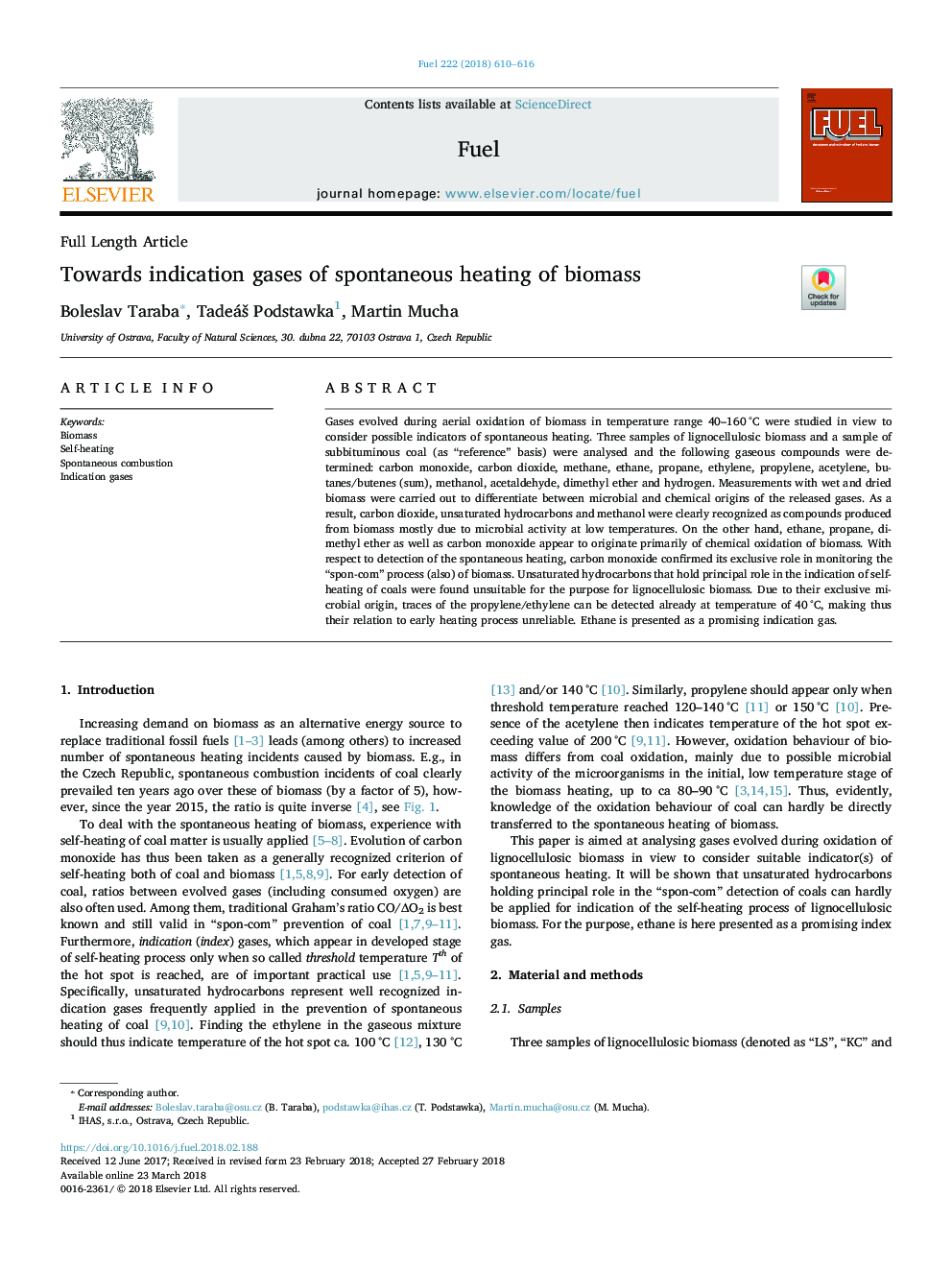| Article ID | Journal | Published Year | Pages | File Type |
|---|---|---|---|---|
| 6631429 | Fuel | 2018 | 7 Pages |
Abstract
Gases evolved during aerial oxidation of biomass in temperature range 40-160â¯Â°C were studied in view to consider possible indicators of spontaneous heating. Three samples of lignocellulosic biomass and a sample of subbituminous coal (as “reference” basis) were analysed and the following gaseous compounds were determined: carbon monoxide, carbon dioxide, methane, ethane, propane, ethylene, propylene, acetylene, butanes/butenes (sum), methanol, acetaldehyde, dimethyl ether and hydrogen. Measurements with wet and dried biomass were carried out to differentiate between microbial and chemical origins of the released gases. As a result, carbon dioxide, unsaturated hydrocarbons and methanol were clearly recognized as compounds produced from biomass mostly due to microbial activity at low temperatures. On the other hand, ethane, propane, dimethyl ether as well as carbon monoxide appear to originate primarily of chemical oxidation of biomass. With respect to detection of the spontaneous heating, carbon monoxide confirmed its exclusive role in monitoring the “spon-com” process (also) of biomass. Unsaturated hydrocarbons that hold principal role in the indication of self-heating of coals were found unsuitable for the purpose for lignocellulosic biomass. Due to their exclusive microbial origin, traces of the propylene/ethylene can be detected already at temperature of 40â¯Â°C, making thus their relation to early heating process unreliable. Ethane is presented as a promising indication gas.
Related Topics
Physical Sciences and Engineering
Chemical Engineering
Chemical Engineering (General)
Authors
Boleslav Taraba, TadeáÅ¡ Podstawka, Martin Mucha,
